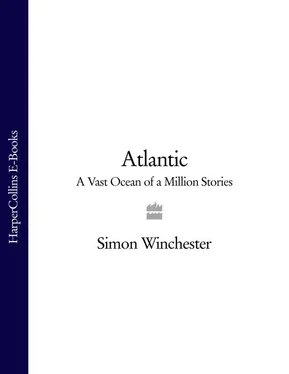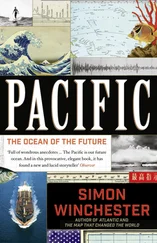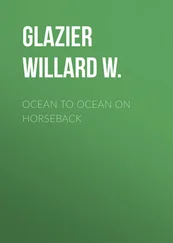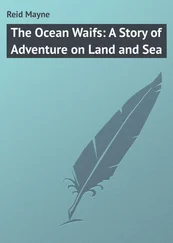Even if the immense universal continent of Pangaea had not yet broken up, it certainly had started to weaken and groan with the weight and weariness of its own long existence. The world was witnessing the beginnings of a brief and yet merciless series of spasms of tectonic mayhem that started tearing the world’s one stretch of land into pieces, from end to end.
And water began to seep into the growing gap between the two halves of Pangaea that were beginning to form. The tiny weasel-tongue of water that laid down sediments that are found in today’s Greece turned into an almighty spigot: trillions upon trillions of tonnes of seawater started to rush inward from it and from the feeder-waters of the surrounding Panthalassan Ocean. In doing so - by beginning the process of prising apart, levering open, wielding a tectonic crowbar — this potent combination of volcanoes, earthquakes, and lots and lots of water started the making of a brand new ocean. It only opened up a crack, like a door cautiously ajar: but it was a process that would continue, and then accelerate and proceed without let-up, for scores of millions of years, right up to the present day. The resulting ocean had been paternally prefigured by the lapetus two hundred million years before. This tiny filigree of seawater that was fast rising between the newly made volcanic cliffs of what are now Nova Scotia and Morocco was the first small-scale indication of the coming birth of the Atlantic.
• • •
The volcanoes lasted for only a few-score thousand years (though some say as much as two million) but their pulses were so violent and the amount of magma they disgorged was so prodigious that the cliffs and mountain ranges that today stand as memorial are awesomely impressive.
I took a family holiday in 1975 on the Canadian island of Grand Manan in New Brunswick, a short distance from where Roosevelt took his summer’s ease on Campobello. We spent happy afternoons investigating the tide pools at Southwest Head, a high cape from where only the Atlantic could be seen, misty and cold, endlessly stretching to the south. Afterwards we walked home to watch the huge Fundy tides at Seal Cove, and on the way passed by a curious assortment of pure white boulders that sat incongruously at the top of a cliff composed of sheer columns of a dark brown rock. The boulders, deposited by glaciers, were called the Flock of Sheep. But it was the brown rock below them, a columnar basalt, that has most intrigued geologists -ever since, in the late 1980s, it was realised that they were quite similar in appearance and probable age to another huge pile of basalts, in a mountain range in Morocco.
I went to these mountains, the High Atlas, when I was researching a different aspect of this book. I had no idea then of their connection with the Grand Manan rocks, nor did I know until I started to ask around. For although Morocco is known for its Palaeozoic as well as its Jurassic and Cretaceous fossils, the Atlas mountains have large outcrops of basalt, too - layers of volcanic rocks sandwiched between the sedimentary rocks, which, it was realised by researchers in 1988, were of exactly the same age as the rocks in places like Grand Manan, in eastern Canada. This discovery, which I was told about while sitting sunning myself in a rooftop bar in the coastal town of Essaouira, led geologists on a huge Easter egg hunt around other Atlantic coastal countries for more basalts of the same antiquity. A series of expeditions in the 1990s found scores of outcrops - sills, dykes, flood basalt sequences - all in enormous abundance, which showed almost certainly just what had been going on a little over two hundred million years ago.
The outcrops were all over — four million square miles of lavas, covering parts of what in time would become four continents: in North America they ranged along the Appalachians from Alabama to Maine, and then well beyond up into Canada and along the shores of the Bay of Fundy; in South America they were found in Guyana, Surinam, French Guiana, and, most impressively, throughout the Amazon basin of Brazil; in southern Europe they were detected in France; and in Africa there were swarms of sills and dykes found not only in Morocco but in Algeria, Mauritania, Guinea, and Liberia. And all these puzzle pieces had alignments and ages and proximities that positively shouted their intimate geological connections and their probable common origin.
The average age of their deposition eventually came in with some accuracy: most of the basalts had been laid down or extruded or blown into the sky 201.27 million years ago, a figure computed with an error either way of only perhaps three hundred thousand years. Some discrepancy exists between the age of the basalts on what would be the eastern side of the region — in North Africa, especially — and those in what would become North America: the American basalts seem older. This discrepancy has led to an impassioned debate over whether the volcanoes led to the extinction of so much of the flora and fauna, since that massive wiping-out - when huge numbers of amphibian species vanished, leaving environmental niches perfectly suited for the arrival of scores of Jurassic dinosaur types - occurred around 199.6 million years ago. Would volcanoes, however almighty, have their principal biological effect almost two million years later? It seems a little improbable — but some laboratories are still trying to link the two events, not least because it makes for a more dramatic, and anthropomorphically comprehensible, story.
The great continent unzipped, though not like a fly on a pair of trousers. It was an inelegant, jerky process, rather like watching a camel getting to its feet, with one part of the ocean opening, then another far away, then a portion of the middle, then another section in the distance, and then back to the middle again. The first waves of water washed the shores of eastern Canada and northwest Africa as they pushed apart from each other, almost at the very beginning of the Jurassic, 195 million years ago. This was the first true moment of the Atlantic Ocean’s life.
Twenty million years on, the process of sea-floor spreading got under way in earnest, in the middle of the sea — like two unrolling carpets, or two unspooling conveyor belts running away from each other from a vague submarine midpoint. The bottom of the sea started to split open, and its two halves began to diverge, the continents on either side shifting steadily apart. West Africa shifted itself about three hundred miles away from South Carolina; Mali moved a couple of hundred miles off Florida; there was a large stretch of wide-open ocean around where the Windward Islands would eventually be, and then a gap of almost a thousand miles opened between Liberia and Venezuela. In this midsection a body of seawater as large as today’s Mediterranean was created, and yet unlike the rather stable-sized Mediterranean, this body only continued to get bigger.
By 150 million years ago, continuing a Canaveral-style countdown, Greenland 5had begun to pull away from Norway, and Iceland began to be built up from deep down in the sea. (The spectacular eruption that began in the spring of 2010 from Ey-jafjoll, an Icelandic volcano that had been quiet for the previous two centuries, and which disrupted air traffic across northern Europe with its immense swathes of high-altitude volcanic dust, is part of the process of building up. Surtsey, an entirely new island born just a few miles away in 1963, may have provided somewhat clearer evidence of the steady swelling of Iceland, but Eyjafjoll produced much more lava, even if most of it was blasted high into the sky.)
At the same time the shallow waters off the northern parts of the British Isles had deepened, and serious wave-tossed oceanic expanses now separated Ireland from Labrador. By ten million years later, Guinea, the Gambia, Senegal, and Sierra Leone had pulled relentlessly away from the coastlines of the putative Guyana, Surinam, and French Guiana, which would occupy a similar dependent position in South America. Hitherto they had been in the same place: five hundred miles of ocean now separated them.
Читать дальше












